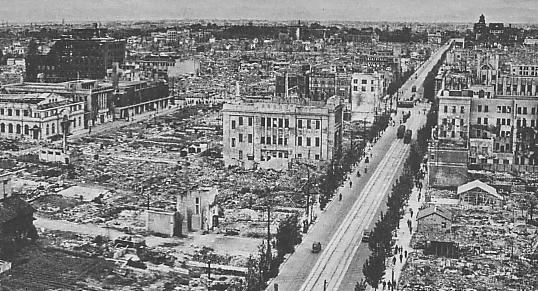 | ||
The Bombing of Nagoya in World War II by the United States Army Air Forces took place as part of the air raids on Japan during the closing months of the war.
History
The first was a strategic bombing attack on April 18, 1942, as part of the Doolittle Raid. A B-25 bomber targeted the Mitsubishi Aircraft Works, the Matsuhigecho oil warehouse, the Nagoya Castle military barracks, and the Nagoya war industries plant.
The second phase began with precision bombing on December 13, 1944, targeting a Mitsubishi military factory. On January 3, 1945, there was a general firebombing of the city. On January 14, 1945, Mitsubishi plants were attacked again. On March 11 or 12 (sources vary) and March 19, 1945, there were large air raids and widespread firebombing. On April 7, 1945, another precision bombing attack hit and destroyed most of the Mitsubishi Aircraft Engine Works. On May 14 and 16, 1945, there were large air raids and widespread firebombing that targeted the Mitsubishi factories and other war industries, the arsenal, railroad freight yards, and the seaport. Nagoya Castle, a national treasure which was being used as a military command post, was also hit during the May 14 raid and burned down.
Also during the winter of 1944 and spring of 1945 there were random single-bomber attacks that were used as psychological warfare to disrupt the city and damage the morale of the citizens. It is estimated that 113,460 buildings were destroyed during the raids, with 3,866 people killed and 471,701 driven from their homes.
Nagoya was targeted for incendiary bombing because it was the center of the Japanese aircraft industry at the time. The city produced between forty and fifty percent of Japan's combat aircraft's and engines. Nagoya housed a port capable of holding 38 ships of up to 10,000 tons. Nagoya also produced equipment for the war effort including railway equipment, ball bearings and processed food.
